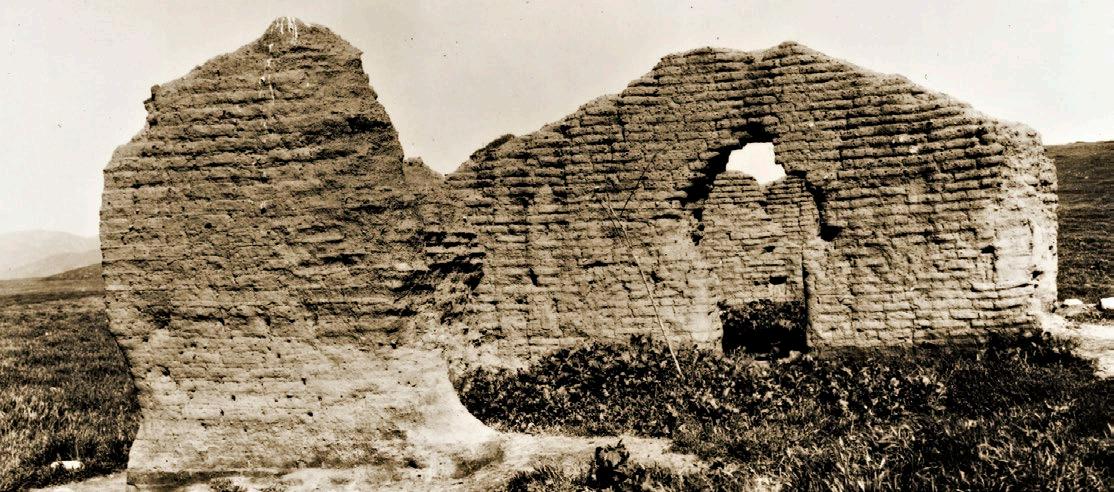
4 minute read
OC History
OC H I STO RY A TALE OF TWO RANCHO SANTA MARGARITAS by Chris Jepsen
PHOTO COURTESY OF OC ARCHIVES
Advertisement

PHOTO COURTESY OF OC ARCHIVES
In 1985, crew graded land for new housing tracts in Rancho Santa Margarita. The first homes went on sale in May 1986. An artist’s concept from 1999 depicts a proposed look for the Antonio Parkway bridge.
PHOTO COURTESY OF OC ARCHIVES

The original Rancho Santa Margarita was in San Diego County. The Marine Corp. maintains the original Santa Margarita ranch house on the south side of Camp Pendleton.
Celebrating 20 years since incorporation, Rancho Santa Margarita is among Orange County’s newest cities. But both its land and its name hold a great deal of history. The area was home to native villages for many thousands of years, the 1769 expedition led by Gaspar de Portolà camped here for several days, the historic Trabuco Adobe (now in ruins) has stood here since the Mission Era, and vaqueros herded cattle here for two centuries.
The origin of the name “Rancho Santa Margarita” is complicated. It’s a case of a place name from San Diego County migrating north to a new location in Orange County. In fact, the modern city of Rancho Santa Margarita is mostly
located on what was actually the old Rancho Trabuco.
The local place name Santa Margarita was originally given to the Santa Margarita River (which is really more of a creek) near what’s now the south half of Marine Corps Base Camp Pendleton. The name was given by the Portolà Expedition, which arrived there on the feast day of St. Margaret in 1769. In the early 1840s, when California was still part of Mexico, Pio and Andres Pico received large land grants in this area. Referencing existing place names, they called their combined properties the Rancho San Onofre y Santa Margarita. Several years later, the Picos were also granted the adjacent Rancho Las Flores, and the

The ruins of the Trabuco Adobe, seen here in the 1930s, are now part of O’Neill Park.
yet-further-combined ranchos were renamed the Rancho Santa Margarita y Las Flores. In the 1860s, the property was deeded to Juan Forster, who also owned adjacent properties to the north, including the Rancho Mission Viejo and Rancho Trabuco in today’s Orange County. Collectively, Forster’s ranchos were often referred to as the Rancho Santa Margarita. The Marine Corps still maintains the old Santa Margarita ranch house on the south side of Camp Pendleton today.
James Flood became the owner of this accumulation of ranchos in the 1880s and in 1906 the Floods gave half ownership to ranch manager Richard O’Neill. When the families later split the ranchlands between themselves, the O’Neills took the property in what’s now Orange County and appropriately revived the old Rancho Mission Viejo name for their portion of the land, including the historic ranchos of Mission Viejo and Trabuco. (Mission Viejo means “Old Mission,” as this was literally the original site of Mission San Juan Capistrano before it was moved to its current location in 1778.)
In 1982, following on the heels of the development of today’s town of Mission Viejo, 5,000 additional acres of Mission Viejo Company property on the Plano Trabuco (Trabuco Mesa) were removed from an agricultural preserve and were re-zoned to become yet another new master planned community.
This master planning process, led by longtime urban designer Richard Reese, had actually begun several years earlier. Reese, who’d dreamed of creating his ideal “urban village” since college, finally had free rein to make his vision a reality.
In 1983, the O’Neill family formed the Santa Margarita Company to manage the process of creating this new community, which they dubbed Santa Margarita. It would be one of several instances in which historic place names were brought north from what’s now Camp Pendleton to serve as names of communities or streets in modern Mission Viejo Company developments.
Construction of the town’s first building — a real estate sales information office — began in late 1985. It was around that same time that complaints about the community’s name were lodged by the existing town of Santa Margarita in San Luis Obispo County. To avoid confusion and headaches, the O’Neill/Moiso family changed the new community’s name to Rancho Santa Margarita. It’s now the longest city name in the state of California, but it works.
The first homes in the town of Rancho Santa Margarita went on sale in May 1986, the first residents moved in that fall, and Rachel Peterson became the first baby born in Rancho Santa Margarita on July 7, 1987.
In 1989, a community group called the Rancho Margarita Civic Association was formed as the political voice of the growing community. A separate group, the RSM Cityhood Committee, was formed in 1995 to push for incorporation. Once cityhood was attained, in January 2000, the Rancho Margarita Civic Association became the first City Council.
Today, Rancho Santa Margarita (or RSM as some call it) is a successful city made up of multiple master-planned communities. It has a population of about 49,000 — a far cry from the days when hundreds lived in Acjachemen villages or when cattle far outnumbered a handful of local vaqueros and ranchers. Still, sycamore- and oak- filled parks and the adjacent rustic Santa Ana Mountains are constant reminders of the land’s long and storied history.
Chris Jepsen is the Assistant Archivist at the Orange County Archives, a function under the office of Clerk-Recorder Hugh Nguyen.










